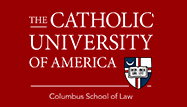Abstract
Technological innovation possesses both opportunity and challenge. Because assisted reproductive technology (ART) involves sexual intimacy, parenthood, personhood, gender identity, privacy, legacy, and a plethora of religious, historical, sociological, and ethical underpinnings, the challenges presented in such technological innovation are substantial. Nonetheless, the opportunities are significant and progressive. Because of in vitro fertilization, gestational and genetic surrogacy, posthumous conception, and mitochondrial replacement therapy, humans now have the opportunity to overcome infertility, gender obstacles to parentage, dynastic limitations, and diseases that have long plagued mothers and infants. However, challenges include the exploitation of surrogates, unequal access to ART services, possibilities of cloning or genetic editing, and babies with multiple parents. Confounding this, both opportunity and challenge are inadequately addressed by existing statutes or judicial commentary.
This Article purports to provide an assessment of current ART technological opportunities relating to the increasing use of assisted reproduction by a broader swath of the American population. Through data provided by the Centers for Disease Control, augmented with commentary from medical and advocacy groups, the ART options utilized and the persons using them are evaluated. The ascendency of surrogacy, illustrated in the 2017 revision of the Uniform Parentage Act, is discussed in relation to the effect of surrogacy upon disparate couples and in greater scrutiny of national and international surrogacy contracts.
Complementing surrogacy are the possibilities inherent in posthumous conception. The Uniform Probate Code and the American Law Institute, have either enacted or proposed statutes to accommodate the possibility of a child or heir being conceived and born after the death of a gamete provider. And yet, the technology of “banking” human gametes has further progressed and quickly surpassed the goals of the statutes enacted. Finally, this Article provides an introduction to mitochondrial replacement transfer, a technology for which the limits have yet to be explored. For the first time in human history it is now possible for a human infant to be born with more than two genetic parents. If a third genetic contributor may be introduced into the reproductive process, why not more than three? And why not be able to choose gender, mental and physical characteristics, and a proliferation of possibilities?
This Article relies upon technological descriptions provided by the Centers for Disease Control and Prevention, and the National Academy of Sciences, plus an array of medical, legal and sociological commentators published in national and international journals. The goal is to provide an assessment of the present state of assisted reproductive technology. There is no effort to provide adequate commentary on the religious, ethical, or sociological effects of this technology. This will occur perforce. An assessment of current technology must be established before providing such commentary, which is the objective and the substance of this Article.
Recommended Citation
Raymond C. O'Brien,
Assessing Assisted Reproductive Technology,
27
Cath. U. J. L. & Tech
1
(2018).
Available at:
https://scholarship.law.edu/jlt/vol27/iss1/3
Included in
Communications Law Commons, Estates and Trusts Commons, Family Law Commons, First Amendment Commons, Intellectual Property Law Commons, Internet Law Commons, Privacy Law Commons, Science and Technology Law Commons


